|
 Secure Site
Secure Site
|
 |
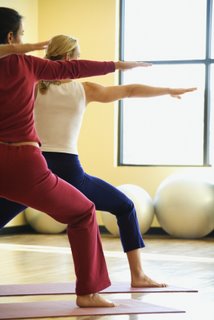 yoga and knee issues Yoga can be a source of knee pain or the ideal therapy. Here’s a primer on keeping the joint healthy on and off the mat.
The chorus of pops emanating from Kyle Ray’s knee was his first clue that his body wasn’t happy in Padmasana (Lotus Pose). It was the end of a relaxing yoga class in Louisville, Kentucky, and the teacher had instructed everyone to assume a seated position for some chanting. Sure, Ray’s knees had acted up on occasion, but he’d gotten himself into Lotus before and was confident he could do it again. He slowly nestled his left ankle into the crook of his hip. Then, grabbing his right calf, he used his arm strength to muscle the top leg into position.
“The noise was awful,” says Ray, 31. A second later, a quick, sharp pain shot through his knee. He gingerly unfolded his legs. After class, it was all he could do to hobble home and place an ice pack on the swelling joint. It took six months for him to be able to walk without pain. Although his knee pain did subside, Ray still frets about the stability of his knees and generally avoids knee-taxing postures like Virasana (Hero Pose).
There’s no doubt that yoga asks much of the knees. Done properly, asana practice can shore them up to prevent injuries and slow the progression of some musculoskeletal diseases, but practiced without mindfulness, it spells disaster for these joints. Clearly, there are just as many people who credit yoga with rehabilitating weak knees as there are determined yogis like Ray, who will themselves into complex poses and pay a big price for overdoing it. But in poses like Supta Virasana (Reclining Hero Pose), in which the knees can feel pushed to the edge, it’s sometimes hard to know if you’re helping or hurting them. So what’s a yoga practitioner who’s concerned about protecting the knees to do? Nothing can replace the guidance of an experienced teacher, but certain principles can guide you into a safe, beneficial practice.
Weak in the Knees
The knee marks the meeting place of three bones: the shinbone (tibia), the thighbone (femur), and the kneecap (patella). Two crescent-shaped pads of cartilage, each called a meniscus, sit between the shinbone and the thighbone and act as cushions between the bones and shock absorbers during movement. Two sets of ligaments—the cruciates and the collaterals—strap all three bones in place. The cruciates crisscross below the kneecap; the collaterals run alongside the outside of the kneecap. The leg’s substantial muscles help these ligaments keep the bones properly aligned.
Unfortunately, the knee’s mechanics are better suited to chasing animals for dinner than to sliding into second base, says Stephen Messier, professor of health and exercise science at Wake Forest University in Winston-Salem, North Carolina. “We weren’t designed to do the things we do with our bodies nowadays,” he explains. “The knee’s engineering isn’t the greatest.”
And it shows: Every year, nearly 11 million Americans complain to doctors about knee pain. Orthopedic surgeons operate more often on the knees than on any other body part; they performed more than 1.2 million such surgeries in 1996 alone (the latest year for which figures were kept).
Roughly 21 million Americans have osteoarthritis of the knee—a degenerative disease in which the cartilage gradually decays and fails to provide the shock-absorbent padding that cushions the bones. Many older people suffer from this painful arthritic condition; age is considered a risk factor, as are obesity and knee injuries.
For years, experts have touted leg strength as one of the best ways to ward off knee problems, including osteoarthritis. This is because the knee’s key muscular supports are the hamstrings—which run from the base of the pelvis down the back of the leg to just below the knee—and the quadriceps, the four muscles on the front of the thigh that (among other things) extend a bent leg. At the first sign of the disease, doctors often instruct their patients to build muscle tone and develop flexibility in the legs so as to delay cartilage deterioration and subdue pain.
But the findings of a study published in the Annals of Internal Medicine in April 2003 indicate that in some cases, building leg strength doesn’t slow the disease’s progression—in fact, it hastens it. Researchers tested 230 volunteers with osteoarthritis of the knee for quadriceps strength and knee alignment, and then retested them 18 months later. The results surprised the medical community: Many volunteers with strong quads also showed rapid cartilage deterioration. But there was a catch—many of those who had strong quads and experienced a rapid progression of the disease also had misaligned kneecaps, a small but significant impairment that intensifies pressure on the cartilage.
You don’t even have to suffer from osteoarthritis for misalignment to cause problems in your knees. In fact, Messier says, “misalignment can cause injury and osteoarthritis over long periods of time, especially if you have stronger muscles that are directing the forces improperly.” If the muscular contraction between the two sides of the knee isn’t balanced, the knee rotates as it bends, which makes the joint pull toward the stronger muscle. Over time, this wears down one meniscus faster than the other and eventually damages the bone the cartilage protects.
While the study points to the problems created by building uneven leg strength, Messier is concerned that its findings will be misinterpreted. “The last thing we want to do is discourage people from getting stronger,” he says. What the study actually highlights is the importance of evenly building the leg muscles to keep the joint properly aligned—a task for which yoga is perfect.
One of the Best Antidotes
Whether you’re out to guard against injury and disease or regain strength and flexibility after an injury, yoga can be a superb antidote to knee trouble. “Yoga is fantastic for the knees, especially for people recovering from damaged ligaments,” says Michael Salveson, who has worked on dozens of yoga students during his 33-year tenure as a Rolfer in Berkeley, California. “Yoga increases the stabilizing action of the leg’s big muscles.” When the inner and outer quadriceps are equally strong, he adds, they exert an equal pull on the ligaments, which keeps the kneecap in alignment.
Sandy Blaine is a good example. As a teenager, she enjoyed dance and gymnastics. By her early 20s, she’d dislocated both knees on several occasions. Searching for a low-impact way to stabilize her joints, Blaine tried Iyengar Yoga when she was 26. She was initially surprised by the discipline’s difficulty, yet what impressed her more was how remarkably good she felt afterward. Within six months of attending two to three Iyengar classes a week, Blaine found that her knee pain had vanished. Today, at 42, she still sounds as if she can’t believe her knees are pain-free, calling the result “an absolute miracle.”
 yoga timers and meditation chime timers - Boulder, CO “I was looking at a lifetime of being very constrained,” says Blaine, who is now an instructor at the Yoga Room in Berkeley and regularly conducts workshops on yoga and knee health. Regaining healthy knees “was an incredible relief,” she adds.
To evenly engage the leg muscles, Blaine does Utkatasana (Chair Pose) with her back against a wall. She focuses on lifting her toes and pressing down evenly through all four corners of her feet. Otherwise, the outer quadriceps do all the work and old patterns are reinforced, she explains. Another way Blaine works on equalizing muscle use is by balancing on one foot with her eyes closed. “Without the orientation of the eyes, your feet and ankles have to find a true alignment to come into balance,” she says.
Robust ligaments are also essential for healthy knees. Less elastic than muscles and tendons, ligaments can give a little and bounce back to their original shape. But trouble brews when they stretch too far: Like a rubber band that’s lost its snap, they lose their shape, leaving the joint loose. Salveson, who is also an instructor at the Rolf Institute in Boulder, Colorado, compares the microtears a ligament sustains in an injury to frays in a rope; when a few strands snap, the rope lengthens. After a torn ligament heals, one side may always be a little longer and, therefore, more susceptible to reinjury. “You can make it stronger,” he says, “but you can’t make it shorter.”
Knee experts are actually divided about whether ligaments can be strengthened. “We know that you can increase muscle and bone strength,” says Angela Smith, M.D., a clinical associate professor of orthopedic surgery at the University of Pennsylvania School of Medicine. “Intuitively, we think that the other structures of the knee—ligaments and tendons—get stronger as well.”
Blane, for one, is convinced that years of Iyengar Yoga have toned her knee ligaments. “At first, my feet, ankles, and knees were so weak that the standing poses were sheer torture,” she says. “My ligaments and muscles were strong on the outer leg and weak on the inner leg, which pulled the knee joint to the side. Yoga helped me strengthen those weak areas. It taught me how not to go with the path of least resistance.” Her ligaments used to be so weak that she once dislocated her kneecap tripping on a curb. But since committing herself to a regular yoga practice, she hasn’t suffered a knee injury in years.
2 Start with your feet. Proper alignment through the feet is the key to building strength evenly in the ligaments on both sides of the knee; when all the ligaments are equally strong, the kneecap glides effortlessly up and down and the cartilage doesn’t get worn down. Separate your toes and press actively through the four corners of your feet in every pose, even inversions. If your feet are out of alignment, your knees are going to suffer.
3 Keep your knees in line. When moving into deep knee bends, such as Virabhadrasana II (Warrior Pose II) and Parsvakonasana (Side Angle Pose), first align your bent knee over your ankle, then draw your kneecap in line with your second toe. Maintain awareness in your back foot, pressing down evenly, while lifting up from the arch of your front foot. “If you let the arch drop, the knee falls inside the big toe, and you’re set up to suffer a number of different kinds of overuse and acute knee injuries,” says Angela Smith, a professor of orthopedic surgery.
4 Tune in to subtle signals. “Oftentimes, the knees don’t give immediate feedback,” explains Iyengar teacher Joni Yecalsik. “Only later do you realize you’ve gone too far. When it comes to the knees, the sensation that would normally proceed the red flag is the red flag.” If you feel achiness when you come out of a bent-knee pose, you may have worked too hard.
5 Build strength by balancing. Balancing poses, especially those that require moving through a bent standing leg, such as Garudasana (Eagle Pose), are especially beneficial. “Very dynamic balancing protects the knee against future injury by training the functional alignment, not just working the muscle,” Smith says.
6 Be prop-friendly. When it comes to seated asanas, nothing makes a tight knee happier than a bounty of props. In Virasana (Hero Pose), try raising your seat with blankets or a block. Anytime the knees are deeply bent, such as in Balasana (Child’s Pose) or Marichyasana III (Pose Dedicated to the Sage Marichi III), pressure can be relieved by placing a rolled-up washcloth as far into the knee pit as possible before bending the joint.
7 Warm up with hip openers. “If your big joints aren’t open, your small joints will always take the stress,” yoga instructor Sandy Blaine says. “Many people hurt their knees doing Lotus when their hips aren’t ready.” She recommends warming up with hip stretches like Baddha Konasana (Bound Angle Pose) and Gomukhasana (Cow Face Pose).
—C.G.
adapted from Yoga Journal by Catherine Guthrie, a writer and yoga teacher in Louisville, Kentucky, and a regular contributor to Yoga Journal.
Using a kitchen timer or beeper watch is less than ideal to use in your yoga practice. And it was with these considerations in mind that we designed our digital Zen Alarm Clock and yoga practice timer. This unique “Zen Clock” features a long-resonating acoustic chime that brings the meditation session or yoga practice to a gradual close, preserving the environment of stillness while also acting as an effective time signal. The Digital Zen Clock can be programmed to chime at the end of the meditation session or periodically throughout the session as a kind of sonic yantra. The beauty and functionality of the Zen Clock/Timer makes it a meditation tool that can actually help you “make time” for meditation in your life.
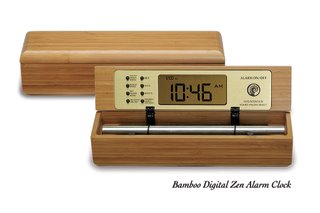 Yoga Timer and Clock by The Maker's of The Zen Alarm Clock - Boulder, CO Our Chime Yoga Timer serves as a countdown and interval timer for yoga, meditation, bodywork, etc.; and it can also be set to chime on the hour as a tool for “mindfulness.”
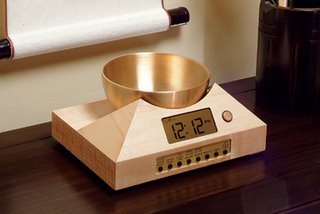 yoga and meditation timers with Tibetan Bowl Gong Now & Zen’s Clock and Yoga Timer Shop
1638 Pearl Street
Boulder, CO 80302
(800) 779-6383
Posted in yoga, Yoga Timer, Yoga Timers by Now & Zen
 sleep and wellness
You have the power to impact your own health and well-being. The actions we take, the choices we make, the way we think, the way we act or react to situations, and the way we move through life all impact our health and wellness more than we may realize. There are shifts you can make in how you think and act that will affect the overall quality of your life.
Routine daily activities we take for granted can impact our health and wellness. The beauty of these activities is that we do not need a medical or healthcare practitioner to pre- scribe them. Two such activities that you can use to impact your health and wellness are movement and sleep.
Movement and exercise
The World Health Organization (WHO) defines physical activity as any bodily movement produced by skeletal muscles that requires energy expenditure.
According to WHO, physical activity reduces the risk of coronary heart disease, stroke, type 2 diabetes, colon cancer, and breast cancer in women. There is even evidence to suggest that increasing levels of various types of physical activity may benefit health by reducing hypertension, osteoporosis, and risk of falls; improving body weight and composition; and decreasing the incidence of musculoskeletal conditions such as osteoarthritis and low back pain.
WHO recommends 30 minutes of moderate-intensity physical activity five days per week to improve and maintain health; the 30 minutes can be accumulated over the course of a day in blocks as short as ten minutes.
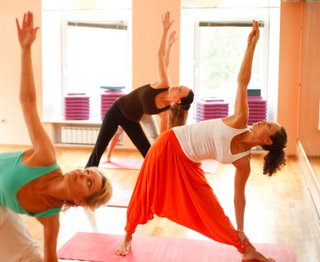 yoga as exercise We tend to think of exercise as running, playing a sport, swimming, using workout equipment, or some other activity that requires extensive physical exertion. There are other options that have benefits, including walking, low-impact exercise, or other mild fitness practices.
In addition to the conventional forms of exercise popular in the West, there is another type of activity that promotes wellness. In China there are two movement programs that have been used for thousands of years and are becoming very popular in Western cultures: t’ai chi and qigong. These programs impact not only the body but also the mind.
T’ai chi (pronounced tie chee) is an ancient program of gentle, slow, fluid movements and coordinated breathing. The movements are designed to stimulate the flow of the energy force (chi or qi) and to promote balance in mind and body. T’ai chi originated as a martial arts style and has been adopted as a movement program because of its health benefits.
The opening ceremonies to the 2008 Olympic Games in Beijing, China, included 2,008 t’ai chi experts demonstrating its graceful and fluid movements. In parks in China, it is common to see groups of people practicing t’ai chi in the morning.
Qigong (pronounced chee gung) is another ancient movement program based on gentle movements with coordinated breathing that includes visualization. It has been described as a self- healing art that, like t’ai chi, cultivates the energy force within us and plays an active role in maintaining health.
When gentle movements are integrated with full, relaxed breathing and deep relaxation of mind, the body enters an especially healing and restorative state. This has a positive effect on the blood, the nervous system, the immune system, and oxygen metabolism.
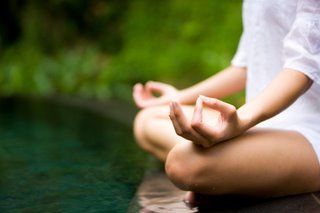 mindfulness practice Yoga is another practice that may serve you well. Yoga is a mind-body practice with origins in ancient Indian philosophy. The various styles of yoga that people use for health purposes typically combine physical postures, breathing techniques, and meditation or relaxation.
Sleep and Rest
Although getting adequate sleep and rest is essential to health and wellness, most people take it for granted. Your body has remarkable healing power, and rest and sleep play a large part in the healing process. When you don’t get enough, it impacts your body’s healthy functioning.
The National Sleep Foundation maintains that seven to nine hours of sleep per night is optimal for most adults and that sufficient sleep promotes overall health and alertness. Sleep debt is the result of not getting enough rest and can cause physical, emotional, and mental fatigue. Studies have shown that sleep loss impairs immune function and the healing process.
When we sleep, our blood pressure is lowered, hormones are secreted, kidney functions change, sensory and motor activities are relatively suspended, and the immune system is impacted. The hormones produced during sleep pro- mote growth, help build muscle mass, repair cells and tissues, and work to fight infections. Sufficient sleep not only pro- motes healing when you are ill or sick, but helps create a positive environment in your body which may reduce the occurrence or severity of disease or illness.
All bodies are unique in how much sleep they need to function optimally. Your body knows how much sleep you need and will be your teacher and alert you when you aren’t getting enough. What shows up in your body when you have had insufficient sleep?
The routine daily activities of moving and sleeping affect our health and wellness. Making a shift to recognize their potential and to make appropriate changes in these areas will have a positive impact.
The Digital Zen Clock’s long-resonating Tibetan bell-like chime makes waking up a beautiful experience – its progressive chimes begin your day with grace.
When the clock’s alarm is triggered, the acoustic chime bar is struck just once … 3-1/2 minutes later it strikes again … chime strikes become more frequent over 10 minutes … eventually striking every 5 seconds until shut off. As they become more frequent, the gentle chimes will always wake you up – your body really doesn’t need to be awakened harshly, with a Zen Clock you’re awakened more gradually and thus more naturally. Unlike artificial recorded sounds coming out of a tiny speaker in a plastic box, natural acoustic sounds transform your bedroom or office environment.
Marc Levin is the author of the recently re- leased book Eight Shifts for Wellness: Practical Transformative Steps to Enhance Health, Wellness, and Well- Being (Golden Nuggets Press, 2011). More information about him and the eight shifts is available at eightshifts.com.
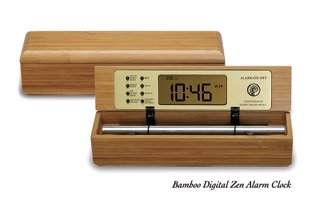 Gentle Chime Alarm Clocks and Yoga Timers Now & Zen’s Alarm Clock Store
1638 Pearl St.
Boulder, CO 80302
(800) 779-6383
Posted in sleep, Sleep Habits
 Japanese Ukiyo-e Crane Print, unknown Now & Zen, Inc. – Boulder, CO – they integrate “real” Natural Sounds into The Zen Alarm Clocks
The natural foods industry is evolving to encompass the broader category of “natural products.” And The Zen Alarm Clock is perhaps the first truly “natural” electronic consumer product: it features an acoustic Tibetan bell-like chime producing natural sounds (as opposed to a sound produced by a speaker); it is housed in a natural hardwood case; and the gradually increasing 10 minute progression of the chime strikes simulates the process of waking up naturally. The Zen Alarm Clock thus appeals to the natural product consumer on many levels — even the aesthetic of its design was created with these people in mind.
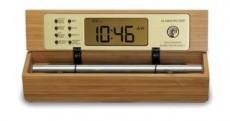 Bamboo Zen Alarm Clock, a natural consumer electronic product Now & Zen – The Gradual Alarm Clock Store
1638 Pearl Street
Boulder, CO 80302
Posted in Chime Alarm Clocks, Japanese Inspired Zen Clocks, Natural Awakening, Now & Zen Alarm Clocks, Progressive Awakening
 Use Mindfulness Practices to Stop Stress You’re cut off while driving. Your children erupt into a screaming fight. Or you’re five minutes away from an interview for the job of your dreams and your composure evaporates in a rush of anxiety. When life delivers adversity, stress is the common response. Your body kicks into action, preparing for a fight. The adrenal glands pump out adrenaline and noradrenaline — hormones that increase the heart rate, quicken breathing, raise blood pressure, and tense muscles. You’re ready to take on the perceived threat to your safety or well-being.
Of course, in reality we rarely run from foes or physically challenge them. As a result, we don’t burn off these powerful hormones, leaving them to “course through our bloodstream,” explains Dr. Herbert Benson, a pioneer in stress research at Harvard Medical School’s Mind/Body Medical Institute. In the short term, a pounding heart and sweaty palms can exacerbate the stressful emotions you’re already feeling. Left unchecked, this chemical mix sets you up for an array of physical and emotional problems, says Benson, including anxiety, depression, and intensified PMS and menopause symptoms.
The next time you are facing a stressful situation, stop yourself from spiraling out of control and bring yourself back to center.
Our Zen Timepiece’s acoustic 6-inch brass bowl-gong clock & timer is the world’s ultimate alarm clock, practice timer, and “mindfulness bell.”
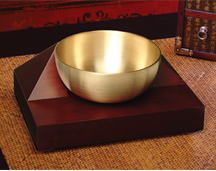 Acoustic Chime Timer and Alarm Clocks from Now & Zen - Boulder, CO
It fills your environment with beautifully complex tones whenever it strikes. In the morning, its exquisite sounds summon your consciousness into awakening with a series of subtle gongs that provide an elegant beginning to your day. Once you experience the Zen Timepiece’s progressive awakening, you’ll never want to wake up any other way. It also serves as the perfect meditation timer and ‘mindfulness practice clock’.
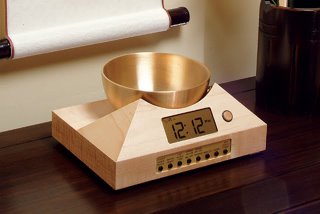 Mindfulness Practice Timer with Singing Bowl Adapted from Body + Soul, text by Erin O’Donnell
Now & Zen Meditation Timer Store
1638 Pearl Street
Boulder, CO 80302
(800) 779-6383
Posted in Bamboo Chime Clocks, Chime Alarm Clocks, intention, Japanese Inspired Zen Clocks, Meditation Tools, mindfulness practice, Now & Zen Alarm Clocks, Truth, Well-being
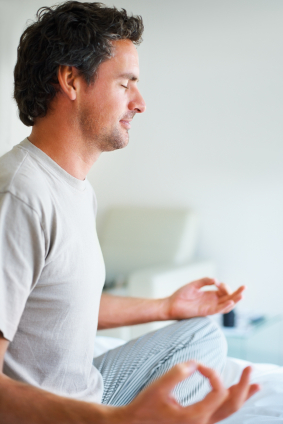 yoga on the road Living in a temporary abode can present challenges for your yoga practice. Yet, this is the time you most need it.
By Sandy Anderson
Whether you’re staying in a hotel, a beachfront condo, or the spare bedroom of your parents’ house for the holidays, living in a temporary abode can present challenges for your yoga practice. Yet, this is the time you most need it—amidst the disrupted schedules, dietary changes, and the toll that traveling can take on your body and mind. So don’t give up!
Start by designating a physical place for your practice. As soon as you set your suitcase down, survey your lodgings and choose a clean, secluded place away from traffic patterns in the room. It might be between a couch and a chair, near a corner next to a nightstand, or next to a wall with a window. Next, set up the accoutrements of your practice: a yoga mat, mala beads, journal, or a folded blanket and pillow from the bed to serve as your meditation seat.
By creating a space in your physical environment, you create a mental space in which your intentions to maintain your practice can take root and grow stronger. Whenever your eyes fall on your mat or meditation cushion, you’ll be reminded to make room in your schedule for yoga. Even if all you have time for is a sun salutation and a relaxation before dinner with your relatives, you’ll stay connected to your practice—and more relaxed and centered while you’re away from home.
Our Yoga Timer and Clock’s long-resonating Tibetan bell-like chime makes doing yoga and meditating a beautiful experience – its progressive chimes begin your day with grace. When the timer’s alarm is triggered, the acoustic chime bar is struck just once … 3-1/2 minutes later it strikes again … chime strikes become more frequent over 10 minutes … eventually striking every 5 seconds until shut off.
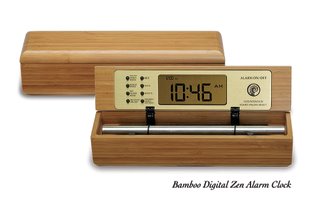 Yoga Timer with Chime
Yoga International senior editor Sandra Anderson is co-author of Yoga: Mastering the Basics and has taught yoga and meditation for over 25 years.
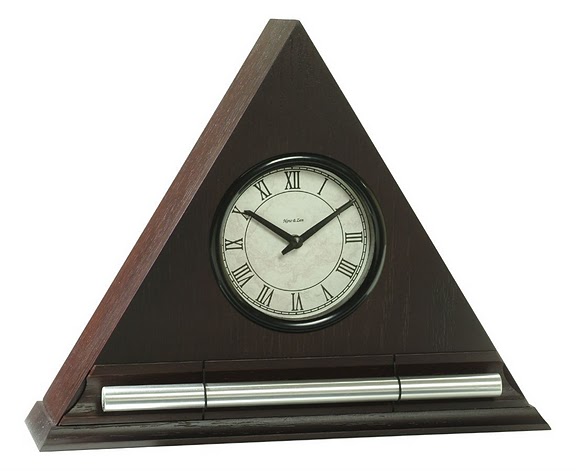 Gentle Alarm Clocks and Yoga Timers Now & Zen’s Yoga Timer and Alarm Clock Shop
1638 Pearl St.
Boulder, CO 80302
(800) 779-6383
Posted in Chime Alarm Clocks
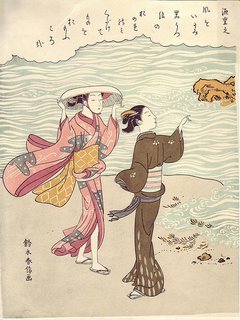 Music as a mindfulness practice
By Joseph Cardillo, PHD, and Galina Mindlin, MD, PhD
Daily life is often about juggling a variety of issues and trying to stay on top of it all. It is, however, easy to slip out of your mental best into something less productive.
Stressors are a major contributor to losing our mental edge throughout the day. Some are expected, like obligations, deadlines, and new projects. But there are the unforeseen ones too, like computer crashes, slow information processing, and interpersonal issues. Other factors that lower optimum performance range from emotional to organizational issues.
Many individuals resort to products like caffeine and energy drinks for that quick energy boost. In small amounts, these products can certainly do the trick, though not without side-effects, and the results are short term. You may ask, isn’t there something else? The answer may be as simple as reaching for your iPod, MP3 player, or cell phone.
We all know how good it feels to hear our favorite song. Imagine powering up your brain with that clean, positive energy at will, anytime, anywhere, and without side-effects. Imagine being able to think more clearly than usual, with a heightened perception of your surroundings, and being able to reach that state whenever or wherever feel the you need.
Neurological imaging has shown that music has a profound effect on both your mind and body. Whether your musical taste is Bono, Billie Holiday, or Celine Dion, you can customize playlists (a combination of your favorite songs) to keep you emotionally sharp and balanced, offering a natural way to relieve anxiety; increase alertness; feel happier; sharpen memory; improve mood; and fight off insomnia, depression, and even addictions without any side effects!
Psychologically, music can be used to change the way you operate in specific situations (like that next office meeting, family outing, or trip to the doctor). It can increase your ability to deal with stress and call forth your peak mindset in everything you do.
But what exactly is your peak mindset? Scientifically, it is a “balanced” mindset, meaning you are simultaneously operating from a place of both maximum calm and maximum alert. So you are not stressed at all—quite the opposite really—and you are highly alert, flowing from one thought, decision, or action to another. Your focus is peaked.
Optimum Calm and Alertness
Optimum calm is not your deepest calm; it is reaching the point where, if you got any calmer, you’d be too mellow. Even one drop more calmness would be too much. The same goes for your alertness: You’re optimally alert when any more excitement is too much and would leave you feeling “wired.” You’re at your “best” when you are balanced.
This is where music comes in. You can customize your iPod, MP3 player, or cell phone into a device to optimize your mindset in seconds. Here’s how:
1. Pay Attention to How You Are Feeling:
Figure out what you feel like when your mind is not in balance—you may feel out of sorts, too jumpy, or too mellow to get a certain task done.
2. Put Together a Playlist that Can Move Your Mindset Up or Down (Alert or Calm):
Start using your playlist (or any song on repeat mode) to help you into your mental best prior to specific situations and then again after seven to 10 minutes. The goal is to use your favorite music to reset your brain to its optimum performance. Note: Staying in a less optimum mindset long enough will make that your “normal” operating mindset. Here is how to begin a playlist that can balance you:
• First, pick calming songs you like a lot.
Choose any kind of music that calms your anxiety. Experiment. You can develop real precision in picking the right songs to relax you in specific situations. Sometimes, you instantly recognize what music you need at just that moment to soothe you. Select from those songs first. But then try listening to a variety of other songs you believe can more exactly relate to your specific needs at certain moments. For example, are you on your way to meet with new employees or are you headed to a meeting? Are you angry, sad, or anxious? Are there songs that instill calm into you, given where you are, how you’re feeling, and your goal? Begin tracking how specific songs change your moods and leave you feeling in specific situations. Add these to your playlist. Title situation-specific playlists for breaking down anxiety or creating calm, such as: “Before a Public Speaking Engagement,” “Going Home from Work,” “Traffic Jams,” or “Before Office Meetings.”
• Look for alertness-energizing songs.
Counter-balance calm songs with energizing, upbeat songs. This can help give you a boost when you need it.
• Pay attention to when a certain song works and when it doesn’t.
Songs are not always situationally interchangeable.
 music and mindfulness • Ingrain songs into your memory by playing them a lot.
So when you can’t listen to your calming or energizing songs, you have them stored in your mind.
• Make task-oriented playlists. Train your brain with your assembled playlist before and after specific tasks. This sends your brain the message that you want this specific mindset in all similar situations. Soon you will be able to call up your optimum mindset whenever you need it, whether you are actually playing the songs or not.
3. Spike Your Songs’ Effects:
Make a mental movie as your song plays. Maybe it is a song from long ago that made you feel safe and peaceful. Tip: Songs from your childhood, ones your mother may have played when you were a child that remind you of pleasant memories, or ones you may have sung with friends or to your own children, are great for relaxing. One business professional I know “charged up” with a song he and his friends would listen to on their way to high school soccer games when everybody got into an excited team mentality. Thinking about images or scenes as you listen to alerting or calming tunes will put your mind into “remembering mode.” This mode will transfer and give you faster recall with upcoming tasks—say, a meeting or presentation. What will work for you will be your own favorite songs.
The most important thing is getting your playlists set up in advance. This way you can carry your best mindset with you right in your pocket and have it at the push of a button. Then all you have to do is train your brain by using your lists over and over. You should begin to see effects in about three weeks. Enjoy the process!
Joseph Cardillo, PhD, is the best-selling author of Be Like Water and other books. He has taught at various universities, including the University of Albany. He received the prestigious 2011 State University of New York Chancellor’s Award for Scholarly Research.
Galina Mindlin, MD, PhD, is an assistant professor of psychiatry at Columbia University, the founder of Brain Music Therapy (BMT) in the United States, and the clinical and executive director of the BMT Center New York City.
The Walnut Digital Zen Clock’s long-resonating Tibetan bell-like chime makes waking and meditating a beautiful experience – its progressive chimes begin your day with grace. When the clock’s alarm is triggered, the acoustic chime bar is struck just once … 3-1/2 minutes later it strikes again … chime strikes become more frequent over 10 minutes … eventually striking every 5 seconds until shut off.
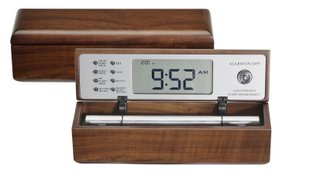 Walnut Digital Chime Timer & Alarm Clock - Boulder, CO The Digital Zen Chime Timer & Clock serves as a countdown and interval timer for yoga, meditation, bodywork, etc.; and it can also be set to chime on the hour as a tool for “mindfulness.”
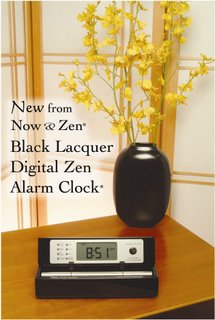 Digital Acoustic Chime Alarm Clocks from Now & Zen Now & Zen’s Chime Meditation Timer Shop
1638 Pearl St.
Boulder, CO 80302
(800) 779-6383
Posted in mindfulness practice

Serves 10
Ingredients
1 liter CalNaturale cabernet sauvignon
1/2 cup organic pomegranate seeds (or substitute splash of pomegranate juice)
1 organic navel orange, halved and slice
1 organic Granny Smith apple, cored and thinly sliced into wedges
1 1/2 tablespoons pure organic maple syrup
3 cups seltzer, chilled
1 cup ginger ale, chilled
2 tablespoons organic sugar
Splash of organic orange juice
Dash of cinnamon (optional)
Ice
In a pitcher, combine the wine, orange juice, pomegranate seeds, orange, apple and maple syrup; refrigerate for 1 hour or overnight. Stir in the seltzer and ginger ale. Serve over ice.
Freelance writer and editor Kim Wallace can be reached at kim@kimberlyloc.com
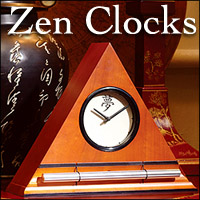 Zen Clocks and Timers Now & Zen’s Alarm Clock Shop
1638 Pearl St.
Boulder, CO 80302
(800) 779-6383
Posted in Well-being
 Snow print by Suzuki Harunobu It’s snowing heavily, and everyone in the backyard is in a swimsuit, at some kind of party: Mom, Dad, the high school principal, there’s even an ex-girlfriend. And is that Elvis, over by the piñata?
Uh-oh.
Dreams are so rich and have such an authentic feeling that scientists have long assumed they must have a crucial psychological purpose. To Freud, when dreaming provided a playground for the unconscious mind; to Jung, it was a stage where the psyche’s archetypes acted out primal themes. Newer theories hold that dreams help the brain to consolidate emotional memories or to work though current problems, like divorce and work frustrations.
Yet what if when dreaming isn’t psychological at all?
In a paper published last month in the journal Nature Reviews Neuroscience, Dr. J. Allan Hobson, a psychiatrist and longtime sleep researcher at Harvard, argues that the main function of rapid-eye-movement sleep, or REM, when dreaming occurs, is physiological. The brain is warming its circuits, anticipating the sights and sounds and emotions of waking.
“It helps explain a lot of things, like why people forget so many dreams,” Dr. Hobson said in an interview. “It’s like jogging; the body doesn’t remember every step, but it knows it has exercised. It has been tuned up. It’s the same idea here: dreams are tuning the mind for conscious awareness.”
Drawing on work of his own and others, Dr. Hobson argues that when dreaming is a parallel state of consciousness that is continually running but normally suppressed during waking. The idea is a prominent example of how neuroscience is altering assumptions about everyday (or every-night) brain functions.
adapted from The New York Times, November 2009 by Benedict Carey
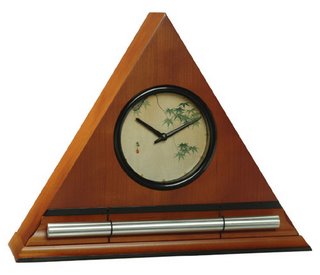 Honey Japanese Maple Leaves Zen Alarm Clock, calming alarm clock useful for remembering one's dreams Now & Zen
1638 Pearl Street
Boulder, CO 80302
Posted in Chime Alarm Clocks, Japanese Inspired Zen Clocks, Natural Awakening, Now & Zen Alarm Clocks, Progressive Awakening, Sleep Habits, Ukiyo-e, Zen Clocks and Dream Recall
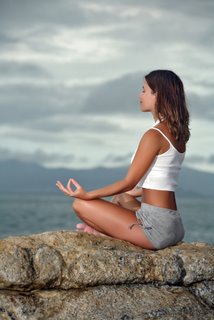 Mountan Meditation Mountain Meditation
Create a comfortable, stable, supported seated posture. If sitting on the floor, support your knees with pillows or blocks. Sit upright and close your eyes. Let your breath flow naturally, without manipulating it. Rest your attention on the rising and falling of your belly or chest.
Imagine a majestically tall mountain. Contemplate how solid and stable the mountain is throughout the changing seasons. At times the mountain may be clouded over, its peak covered in fog. Sometimes the mountain is assaulted with thunder, lightning, and heavy rains. Sometimes it rises into a clear blue sky or a few white puffy clouds. At times it is covered in snow, at times with lush foliage, and at other times it is barren. Throughout, it remains stable and unaffected by the changing weather or seasons. Let this stable quality of “mountainness” nourish your concentration and your ability to sit through all the varying experiences that arise while practicing this meditation.
Now feel your posture to be like a mountain. Breathing in, see yourself as a mountain; breathing out, feel stable. Some thoughts and emotions are like storms, others like sunshine. Your mind can be clouded over or clear and bright, but through it all, you can still sit solid.
adapted from Yoga Journal, by Frank Jude Boccio
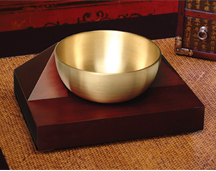 Meditation Timer with Singing Bowl Now & Zen
1638 Pearl Street
Boulder, CO 80302
(800) 779-6383
Posted in Bamboo Chime Clocks, Meditation Timers, Meditation Tools, mindfulness practice, Now & Zen Alarm Clocks, Well-being
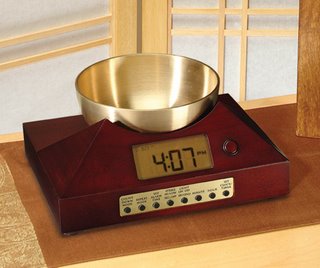 Zen Timepiece with brass bowl
Discover the healing power of sound with singing bowls, tuning forks, and other musical instruments.
Music can move us to tears, help us feel calm or comforted, or inspire us to action. The rhythmic sounds of nature (think of waves breaking on a beach) can bring us into balance. Now researchers are learning more about how music and sound directly affect the healing process.
EVIDENCE. A 2008 study at the University of Maryland School of Medicine revealed that listening to music you consider joyful for 30 minutes helps release endorphins to relieve pain and reduce stress, which can otherwise overload your immune system and lead to a host of health conditions. Another study completed last year at Seattle University in Washington showed that listening to Mozart for 12 minutes three times a week can lower systolic blood pressure by seven points.
YOUR BODY TUNES IN. Researchers say that when you listen to music and sounds, your heartbeat, breath, and brain waves begin to slow down or speed up in response to what you’re hearing. Your body syncs up with the sound, and the result can be an enhanced relaxation response—stress lifts, your heartbeat slows, muscles relax, and your body releases feel-good endorphins—or improved energy levels, depending on the rhythm.
GET STARTED. Try these ways to benefit from sound therapy:
EASE STRESS:
Use tuning forks and singing bowls
“Sonic tools” like tuning forks and singing bowls can soothe an overexcited nervous system, says Jonathan Goldman, author of The Seven Secrets of Sound Healing (Hay House, 2008). Singing bowls create a calming noise when you run a mallet around the rim, and tuning forks hum when tapped.
Try it: Use these tools as frequently as needed, says Goldman. For tuning forks, go to Healing Sounds or Biosonics. For crystal singing bowls, visit Crystal Tones. For Tibetan singing bowls, try Now & Zen, Inc., Headquarter Store, 1638 Pearl Street, Boulder, CO 80302.
RELIEVE INSOMNIA:
Listen to a healing CD
“Music is to the nervous system what nutrients are to the body,” says Joshua Leeds, author of The Power of Sound (Healing Arts Press, 2001). He designs audio CDs with music, special effects, and sounds from the natural world to enhance various activities, such as falling asleep.
Try it: See Sound Remedies or Steven Halpern Inner Peace Music.
SHARPEN YOUR MIND:
Learn an instrument
Studies show that daily practice of a musical instrument can keep the brain young and pliable. It can also help relieve tension as your body actually resonates with the soft energies of the instrument.
Try it: Find a local teacher and ask about beginner lessons. Practicing for five minutes can clear tension and a foggy mind. Use your Zen Timepiece in the morning to wake up to a singing bowl for a gentle and progressive awakening.
Our Zen Timepiece’s acoustic 6-inch brass bowl-gong clock is the world’s ultimate alarm clock, practice timer, and “mindfulness bell.”
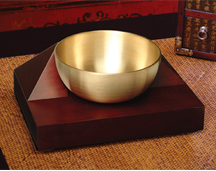 Natural Sound Alarm Clocks & Sound Therapy It fills your environment with beautifully complex tones whenever it strikes. In the morning, its exquisite sounds summon your consciousness into awakening with a series of subtle gongs that provide an elegant beginning to your day. Once you experience the Zen Timepiece’s progressive awakening, you’ll never want to wake up any other way. It also serves as the perfect meditation timer.
adapted from Natural Health Magazine July 2010, by Elizabeth Casey
 Singing Bowl Clocks by Now & Zen called The Zen Timepiece
Posted in Bamboo Chime Clocks, Chime Alarm Clocks, Goodness, Meditation Timers, Meditation Tools, mindfulness practice, Natural Awakening, Progressive Awakening, Well-being, Zen Timepiece by Now & Zen, Zen Timers
|
|
|
|